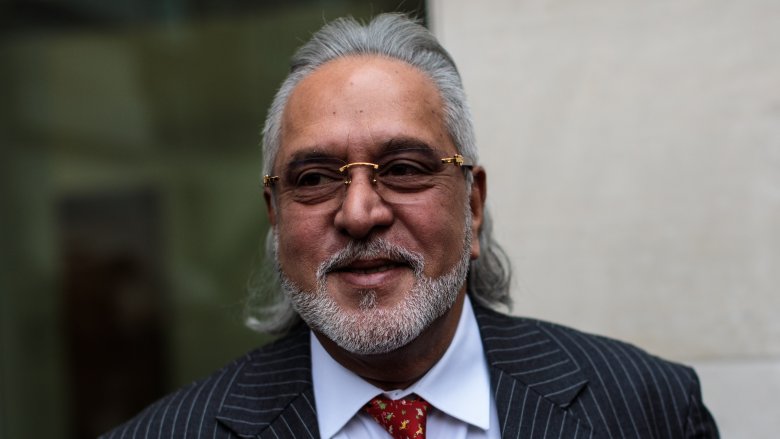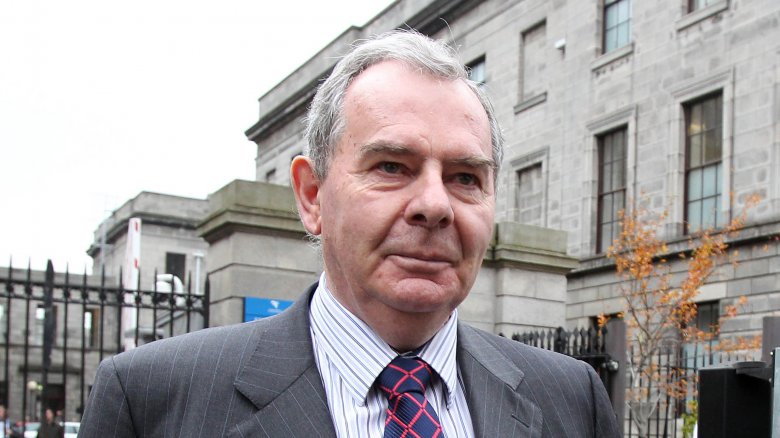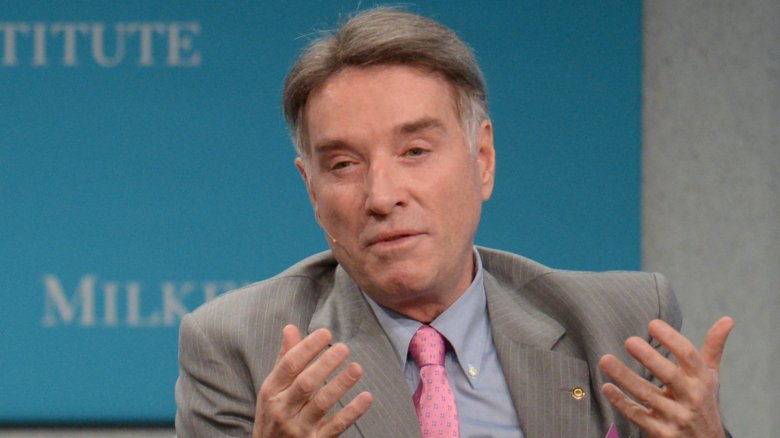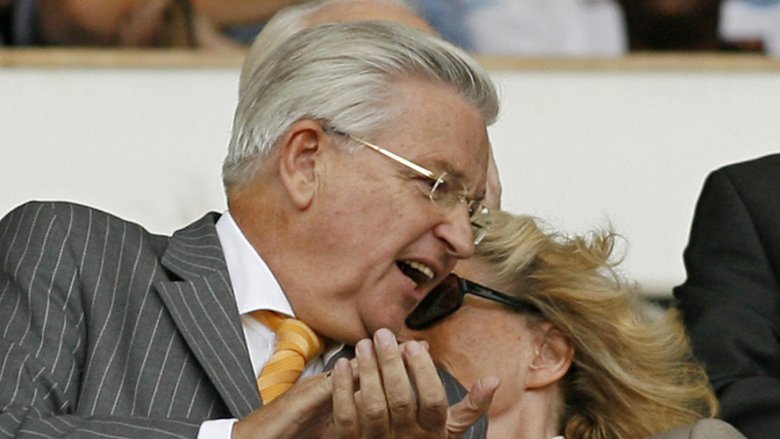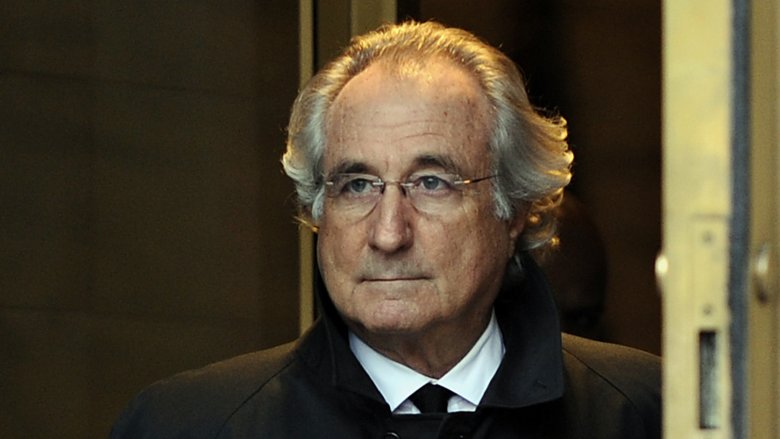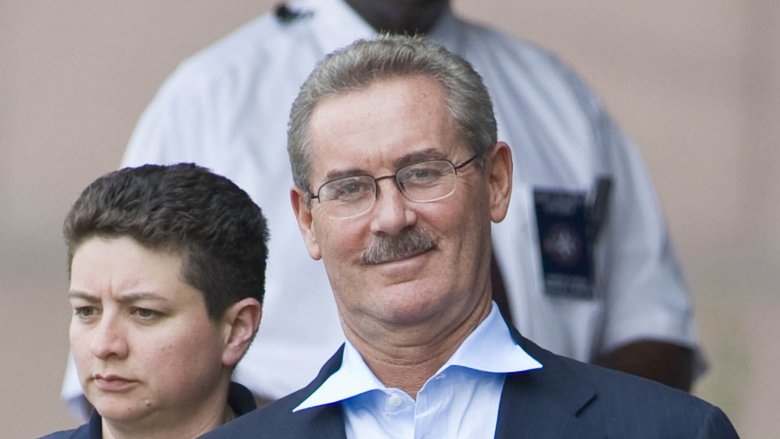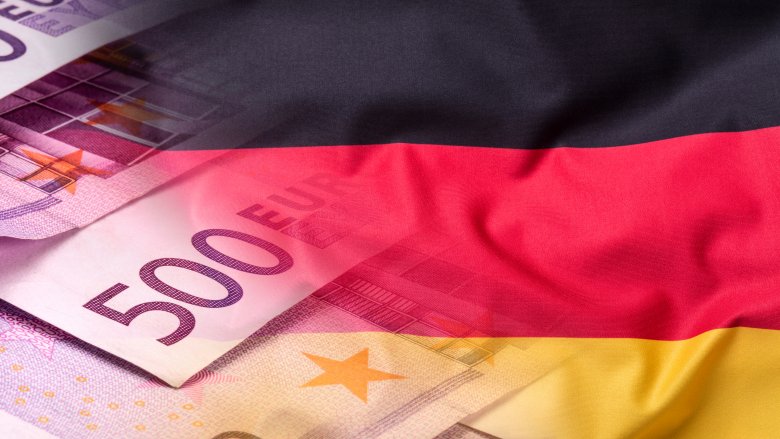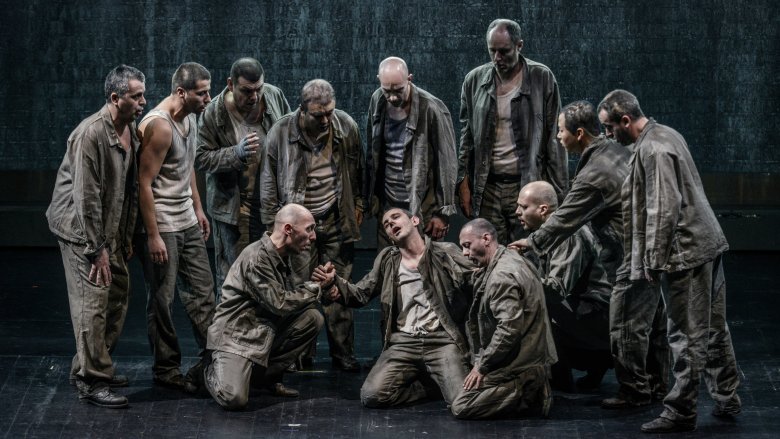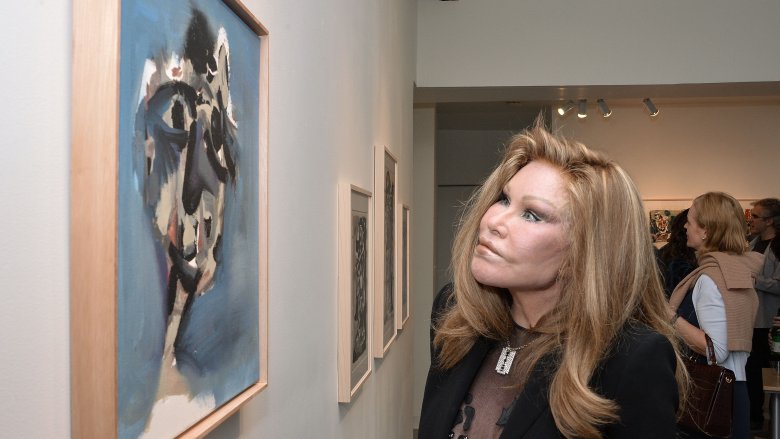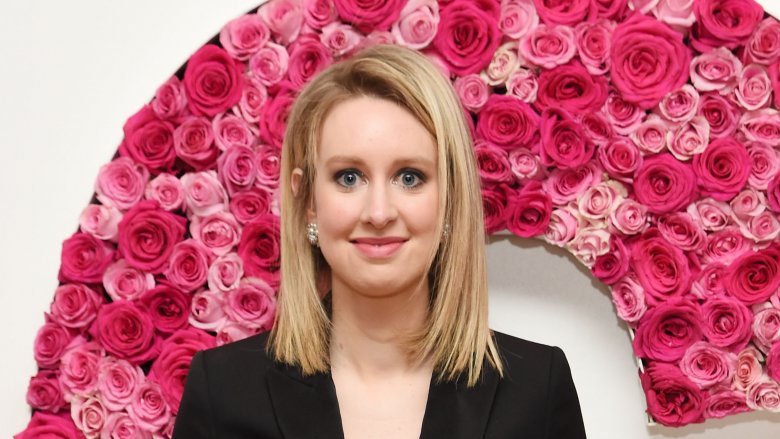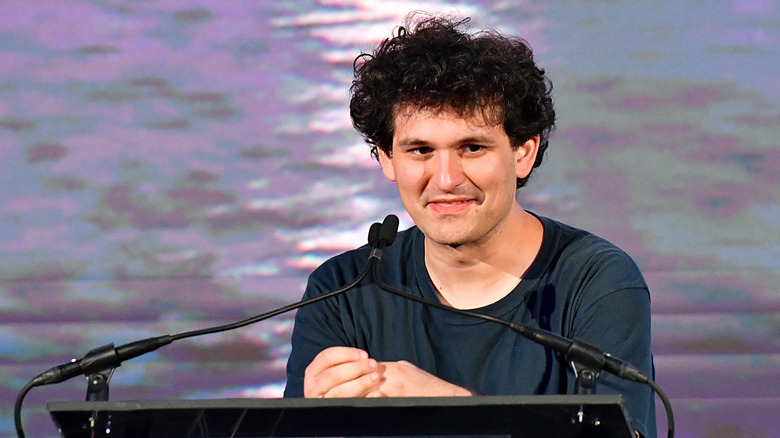Billionaires Who Lost Their Entire Fortunes
A billion dollars is a lot of money. It's such a stupid, ridiculous amount of money that our tiny brains can't really comprehend just how much money it is. When asked to picture a billion dollars, most people probably just revert to childhood and think of Scrooge McDuck diving into his room full of shiny gold coins. That's fitting, since the fact anyone actually has a billion dollars is comical.
But a lot of people do manage to hoard that much money. In 2019, there were 2,153 billionaires in the world. While having that amount of riches is impressive, if ethically questionable, what is really impressive is when a billionaire manages to lose a billion dollars (or more). Once you have that much money, all you would have to do is basically hide it in your garden and be rich forever and be buried in a solid gold coffin. But the bad decisions by these billionaires (and the 2008 financial crisis) managed to wipe them out.
Vijay Mallya
Vijay Mallya sounds awesome. According to the New York Times he "spent a lifetime building a reputation as India's professed King of Good Times." Sometimes called the Indian Richard Branson, he turned his family brewing business into a massive conglomerate. He also made money in chemicals, fertilizer, and an airline. But the "flamboyant" tycoon once said he played just as hard as he worked. Mallya loved to party, and his own birthdays included performances from stars like Enrique Iglesias and Lionel Richie. He also bought a stake in a Formula One team. Meanwhile, his company was having problems paying its staff.
It was a sign things weren't going great. Besides employee back pay, Mallya's airline also owed more than $1 billion in loans. The authorities raided his homes and offices in 2015. He fled India for Britain in 2016. But he wasn't out of the reach of the law, and Mallya managed to get arrested twice in 2017 for defaulting on his loans and money laundering, the Times of India reports.
As of April 2019, however, he was still fighting extradition to India to face charges, per Live Mint. While Business Today says Mallya was relying on his children, business acquaintances, and even his personal assistant to get by, his lawyers admitted the ex-billionaire was having trouble living frugally, and was still spending $24,000 a week. They did say he was graciously willing to cut that to a mere $37,500 a month. Meanwhile, his creditors want their $1.5 billion back.
Sean Quinn
In March 2008, Forbes listed Sean Quinn (and family) as the 164th richest "person" in the world, with a net worth of $6 billion. Quinn's meteoric rise was impressive. The BBC says he left school at 14 then borrowed £100 to start a business selling gravel. Quinn built that into one of Ireland's most successful companies, getting involved with insurance, concrete, glassmaking, a bunch of hotels, and a bank, with 8,000 employees total. At one point he was the richest man in Ireland.
In November 2011, Quinn declared bankruptcy in the U.K., the biggest bankruptcy case in the country's history. A couple months later he also declared bankruptcy in Ireland. RTE reports he said the bank calling his loans had a "vendetta" against him. But the Irish Banking Resolution Corporation said it was just trying to recover 2 billion euros the Quinn family owed them. In November 2012, Quinn ended up in jail on three contempt of court charges. When he got out nine weeks later, he told the BBC (via the Irish Times) that prison was "tough" and he didn't think he deserved it.
As of March 2019, Quinn's fight with the IBRC was still ongoing, according to the Journal. His children were trying to convince the court that their father totally screwed them over, and while they might have owned companies on paper, in reality he was in charge of everything.
Eike Batista
At one point, Brazilian Eike Batista openly bragged he was going to become the richest person in the world, according to Live Mint. This wasn't a completely crazy goal, since he was the eighth-richest person and worth $35 billion at the time. But things went very south, very quickly.
The New York Times says the "flamboyant" oil and mining tycoon was a cheerleader for his home country, particularly Rio de Janeiro. Batista donated cars to the police, renovated a famous hotel, and helped clean up an important lake before the 2016 Olympics.
But then Batista managed to lose his fortune in a single year. First his oil company filed for bankruptcy in 2013, then the Brazilian economy tanked in 2014. That was the money, but the final nail in the coffin came in January 2017 when he was caught up in a corruption scandal described as "much, much bigger" than Watergate, with hundreds of businesspeople and Brazilian government officials charged. The Times called Batista "perhaps the highest-profile businessman" caught up in the scandal.
In 2018, he was sentenced to 30 years in prison for paying $16.5 million in bribes. But a year later he was still just under house arrest — very loose house arrest since he was walking the streets and talking to reporters. But that didn't mean things were looking up for him. In 2019, he was fined $134 million for insider trading and banned from running a public company for seven years, reports NDTV.
Bjorgolfur Gudmundsson
Bjorgolfur Gudmundsson has had an extremely interesting life. According to the Guardian, the Icelander with "impeccable manners, gentle demeanor and boyish humor" went from furniture packer and law student to billionaire and philanthropist. In the 1990s, he spent a year in prison for shady bookkeeping. When he got out, he went to Russia to rebuild his fortune, which meant "[defying] the St. Petersburg mafia." He married his wife after she left her second husband, the founder of the American Nazi Party, who was later assassinated. Gudmundsson became Iceland's second billionaire (after his own son) and had business interests in "shipping, publishing, food, communications and property." He financially supported a symphony, rock stars, and students. A promising soccer player in his youth, Gudmundsson bought West Ham United FC in 2006. Their many losses must have been difficult, since he is also a recovering alcoholic.
Yahoo Finance says that in March 2008, Gudmundsson was worth $1.1 billion. By December, his net worth was zero. When Iceland's second-largest bank collapsed during the financial crisis, it wiped him out completely. His company went into liquidation and he sold West Ham. The Telegraph reports by August 2009, Gudmundsson filed for bankruptcy with £500 million worth of debts, the biggest personal bankruptcy claim in the world ever at that point. The former billionaire told the judge he faced "almost complete lack of income." And the hits kept on coming. In 2015, Gudmundsson was charged in one of the largest fraud cases in French history, per Iceland Magazine.
Bernie Madoff
Bernie Madoff is now famous for running the largest Ponzi scheme of all time. But for a while, he was known as one of the most brilliant men on Wall Street. After graduating from college in 1960, he founded his investment firm with $5,000 he saved from working as a lifeguard, according to CNN. For more than two decades, he was legit. The Encyclopedia Britannica says it wasn't until the 1980s that his company turned into a Ponzi scheme.
People invested with Madoff because he promised them amazing returns on their money, which he then paid using money from newer investors. Then the newer investors were paid with the investments of even newer people. Madoff made himself stand out from other companies by being exclusive. You had to ask to invest with him, and he might not say yes. This was catnip for the rich and powerful. Saying you invested with Madoff became a mark of prestige for people like Steven Spielberg and Kevin Bacon.
Madoff managed to keep his scheme going an impressively long time and became a billionaire himself in the process. But the 2008 financial crash was too much for his fake business to take. He admitted he'd lost his clients $50 billion and was arrested for securities fraud. In 2009 he was sentenced to 150 years in prison. In 2013, the former billionaire was earning $40 a month doing prison labor. His victims are still trying to recover their money.
Allen Stanford
Poor Allen Stanford. He worked so hard at being a crook, but no one knows who he is because he only ran the SECOND-largest Ponzi scheme of all time. Since it was discovered just two months after Bernie Madoff's, Stanford didn't get nearly the notoriety it deserved.
According to CNBC, the native Texan liked to live big. Stanford was listed on the Forbes 400 in 2008, worth around $2.2 billion. Despite the fact he made all this money totally illegally, selling "fraudulent certificates of deposit from his offshore bank on the island of Antigua," which was basically a $7 billion Ponzi scheme, he had no problem spending it. In just three years, he spent $100 million just on aircraft, including helicopters and Lear Jets (plural). He spent $12 million to make his yacht 6 feet longer. Vanity Fair reports he was knighted by Antigua in 2006 and repeats a tabloid story that he "fathered no fewer than five children by three women other than his wife."
Stanford started his first offshore bank in 1985. Like Madoff, he promised absurd returns on investment. There were rumors about how he did it, and as early as 1997 the SEC knew something was up but didn't do anything for some reason. A financial expert who toured the bank in 2006 said that it was obviously a Ponzi scheme because the staff and infrastructure were completely inadequate. Everything fell apart in February 2009, and Stanford is now broke and serving a 110-year prison sentence.
Adolf Merckle
To get this out of the way first thing, Adolf Merckle was born less than five months after Adolf Hitler came to power, so don't hold his first name against his parents. The Guardian reports Merckle was born into an entrepreneurial family and while he originally trained as a lawyer, he set about building on the family's already considerable fortune. Time says he turned his grandfather's chemical company with 80 employees into an empire of 120 companies employing 100,000 people. Merckle even diversified to random things like a ski lift business. He had the foresight to marry a woman whose family owned a "cement dynasty." In 2008, he was the 98th richest person in the world, worth 12.8 billion pounds. But Merckle kept a low profile and his biggest passion was just mountain climbing.
Then the 2008 financial crisis hit. Merckle lost an estimated 500 million euros on a Volkswagen investment alone. One of his companies had debts of 5 billion euros. The German government refused to help. At one point, Merckle was in negotiations with 40 banks trying to get refinancing assistance, but he thought their demands were too great, so he threatened to file for bankruptcy.
It finally became too much, and in January 2009, Merckle died by suicide. His family said the financial crisis had "broken" him.
If you or anyone you know is having suicidal thoughts, please call the National Suicide Prevention Lifeline at 1-800-273-TALK (8255).
Patricia Kluge
Patricia Kluge got her money the old-fashioned way. As in, the Daily Beast says she was a former belly dancer and nude model who became the third wife of billionaire John Kluge, who was 34 years older than her, according to the New York Times. They got hitched in 1991 and for nine years lived an extravagant jet-set lifestyle. But their home base was a 23,500-square-foot, 45-room mansion in Virginia. There guests were expected to wear tweeds, were waited on at dinner by liveried footmen, and were driven around in horse-drawn carriages. There was a private chapel. Sure, some dogs were found dead under weird circumstances, but the tabloids had to have something to talk about. Anyway, it wasn't the Labrador the Queen of England gave them.
In 1990, the rags were fed in a big way when the Kluges divorced. John Kluge was one of the richest men in America, and in order to be free of his wife he gave her a reported $1 billion, the biggest divorce settlement ever at that point.
But Patricia Kluge majorly overextended herself. In 2010, she started auctioning off everything from jewelry to guns to designer clothing. But it wasn't enough. She had to sell her beloved winery, to Donald Trump of all people, who kindly gave her a job there. A neighbor said Kluge was becoming a "laughingstock." And she didn't raise enough money to stave off bankruptcy. Trump even fired her from her vineyard job after just a year.
Alberto Vilar
Alberto Vilar is absolutely obsessed with fancy music. In 2006, the New Yorker ran an article about him titled "The Opera Lover," which mentioned that Vilar attended one opera performance a week, and was "the largest supporter of classical music, opera, and ballet in the world," donating $300 million to the arts in just three years.
Vilar could afford to be so generous because he'd made a fortune in the tech boom. In 2000, he was worth $1 billion and on the Forbes 400 list. There was just the tiny issue that he made all that cash illegally. According to Reuters, starting in 1986, Vilar's money management company Amerindo "engaged in a fraudulent scheme investing in risky stocks against ... clients' wishes, and offering high returns by investing in a sham product in guaranteed fixed-rate deposits." At one point, the company was managing $10 billion and invested heavily in tech stock. When the tech bubble burst in 2002, Vilar was in trouble. So he stole money to pay his bills, including $5 million from a single investor. He still supported the arts as well. But he started giving away money he'd stolen and promised philanthropic donations he didn't have the funds to actually pay.
Vilar's crimes caught up with him. In 2005, he was arrested for mail fraud. At that point, he had a "negative net worth." He was convicted in 2008 and spent 10 years in prison. When he got out, he went right back to attending the opera.
Jocelyn Wildenstein
Jocelyn Wildenstein has been called the "Bride of Wildenstein" and "Catwoman" in the New York tabloids because of her very different look. She told Paper Magazine the rumors she had a ton of plastic surgery were started by her bitter ex-husband, and her eyes and cheekbones are down to her Swiss heritage.
That bitter ex-husband did make her a billionaire, though, even if their divorce was tumultuous. For 20 years she was married to French art dealer Alec Wildenstein, but their relationship fell apart suddenly in 1999. According to the New York Post, Jocelyn Wildenstein got a reported $2.5 billion in the divorce.
It's hard to spend away that amount of dough, but Wildenstein managed. Money reports that she was used to spending $1 million a month when she was married, and it doesn't seem to have changed after her divorce. She bought $10 million in jewelry and spent $350,000 on a single Chanel dress. In a time before free talk and text, she ran up a $5,000 phone bill every month. There were issues with the trust that handled her money as well, like when an expensive Diego Velázquez painting turned out to be fake.
In 2018, Wildenstein was "surprised" when she had to file for bankruptcy. Her $6.38 million in debts included $300,000 to lawyers and $4.6 million on her apartment. She listed her bank account balance as $0 and said she was surviving on $900 a month in Social Security, plus help from her family and friends.
Elizabeth Holmes
On paper, Elizabeth Holmes was unbelievably impressive. She started her first business in high school, according to the Encyclopedia Britannica, and at 19 dropped out of Stanford to develop an idea she had that would revolutionize the blood testing industry. Since Holmes was afraid of needles, she thought there must be a way to do all diagnostic tests from just a finger prick of blood. That idea became Theranos, a company eventually valued at $9 billion, reports Business Insider. That meant Holmes, who was seen as a female Steve Jobs, was the youngest self-made female billionaire at the time and made it onto the Forbes 400 in 2014. Biography says Theranos attracted investors like billionaire Rupert Murdoch and board members like Henry Kissinger. On paper, everything was great.
Unfortunately, when things moved from paper to the real world, they all fell apart. Theranos was basically one big scam. None of the cutting-edge technology Holmes trumpeted actually worked. Former employees reported a culture of secrecy and fear in the company that let the con go on too long. Now there's an HBO documentary and a best-selling book covering how Holmes pulled it off.
That kind of chicanery gets you in big trouble. Holmes was booted from Theranos, which eventually closed completely. She was indicted on 11 counts of fraud and faces 20 years in prison. Her net worth plummeted to zero. However, it's reported she secretly married a hotel heir, so maybe she'll land on her feet financially.
Sam Bankman-Fried
If you, like so many people in the world, hear the word "crypto" and immediately tune out of whatever conversation you were having, the name Sam Bankman-Fried probably doesn't mean much. But for those who prefer their financial speculations to involve blockchain, he was a titan of industry. His profile and that of his biggest company, the cryptocurrency exchange FTX, expanded in 2022 thanks to commercials starring a pre-divorce Gisele Bündchen and Tom Brady, and a Super Bowl commercial with comedian Larry David, per The Washington Post. They lent their famous faces and established goodwill with the public to a company that wanted everyone to think investing in crypto was a safe investment. FTX also advertised heavily in sports, paying for naming rights of both the Miami Heat arena and the UC Berkley stadium, as Forbes reported.
All this added up to a fortune — on paper anyway — for Bankman-Fried, but he was pretty honest that it was basically a Ponzi scheme built on quicksand. Since he also claimed to be a good-hearted billionaire who just wanted to help people by doing good with his once-estimated $20 billion, and was one of the biggest political donors for the Democrats in the 2022 midterms, no one seemed to take his warnings about his own company seriously.
It all came crashing down within a week in November 2022. After financial irregularities were publicized in the crypto press, the 30-year-old Bankman-Fried was worth squat. He had bigger problems, though, since he was quickly arrested in the Bahamas, according to Fortune.

